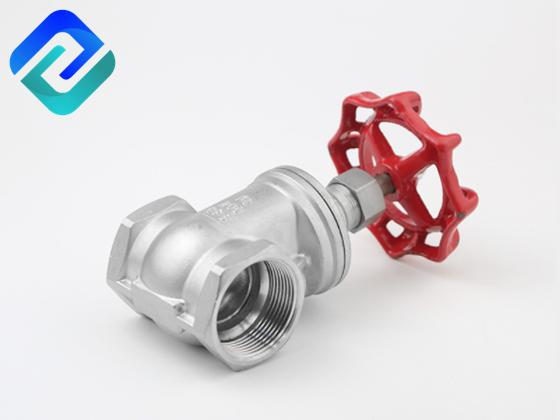- +86 187 3271 1873/+86 132 8322 1383
- [email protected]
Ball Valve and Globe Valve are both common industrial valves that can control the flow of fluids.However, there are great differences between the two in terms of structure, opening and closing methods, performance characteristics, application scenarios, etc. If the wrong valve is selected, it may cause inconvenience in use.
Ball Valves
Ball valves are valued for their long life and excellent performance even after years of use. Inside a ball valve, the ball is usually drilled from one end to the other and is usually made of brass, chrome brass or stainless steel. A lever is attached to the top of the ball, which has a range of motion of only a quarter turn. By moving the lever parallel to the pipe, the opening of the ball is aligned with the flow of water. By moving it perpendicular to the pipe, the solid part of the sphere stops the flow. You can control the flow by moving the lever between 0° and 90°. However, a partially open ball valve leaves silicone or PTFE seats at the ends of the ball and is prone to deformation from uneven pressure.

Globe Valve
A stop valve is a valve used in a pipeline system, mainly used to control the flow or shut off of a fluid. Its structure is generally composed of a valve body, a valve cover, a valve seat, a valve disc, a valve stem, etc. During operation, the valve disc is driven up and down by rotating the valve stem, thereby adjusting or completely cutting off the flow of the fluid in the pipeline. Stop valves are often used in situations where precise flow control is required, and can effectively prevent the reverse flow of the fluid. It has good sealing properties and is suitable for high-pressure or high-temperature pipeline systems. Common stop valve materials include cast steel, stainless steel, etc., and are widely used in fluid control in industries such as petroleum, chemical, electric power, and metallurgy.

Globe valve working principle
A globe valve is a multi-turn valve, meaning the handwheel must be rotated more than 360° to fully open or close the valve. The main components of a globe valve are the valve body, bonnet, handwheel, stem, and valve plug. Media flows into the valve body through the inlet and out through the outlet. The bonnet protects the valve's threaded components and is connected to the valve body. When the user turns the handwheel, the threaded stem rotates, raising or lowering the valve plug. Raising the valve plug opens the valve orifice, allowing media to flow. Lowering the valve plug into the valve seat seals the orifice, preventing media flow. Raising the disc, on the other hand, increases flow. Flow is maximum when the disc is fully raised. Fluid flow is controlled by the stem moving the disc proportionally.
How a Ball Valve Works
A ball valve is a quarter-turn valve, meaning that a simple 90° rotation of the handle fully opens or closes the valve. The main components of a ball valve are shown in Figure 3. The valve stem is connected to the ball. The ball seats on the ball seat, creating a seal. An O-ring stem seal prevents leakage. All of these components are located within the valve body housing. As shown in Figure 3, the ball has a bore extending through it. During normal operation, the bore is either aligned with the valve port, allowing fluid flow, or perpendicular to the port, preventing flow. Read our article on ball valves for more detailed information on how ball valves work.
| Ball Valve | Globe Valve | |
| Opening and closing structure | The ball has a through hole, and the switch can be rotated 90°. | The disc moves up and down, relying on the screw to rotate. |
| Operation mode | Quick opening and closing (1/4 turn is enough) | Slow opening and closing (requires multiple turns of rotation). |
| Flow channel structure | Straight-through, low resistance | Twistful flow path, high flow resistance. |
| Sealing method | Soft seal/metal seal (fitted by the ball) | Metal to metal/soft seal. |
| Installation direction | Unrestricted, any direction | Usually installed according to the flow direction arrow. |
| Volume and weight | Small and compact | Usually large and heavier. |
| Ball Valve | Globe Valve | |
| Opening and closing speed | Very fast | Slow |
| Flow resistance | Small | Large |
| Is it suitable for frequent opening and closing | Yes | No (easy to wear) |
| Is it suitable for throttling adjustment | Not recommended | Very suitable |
| Sealing performance | Very good, almost zero leakage | General |
| Service life | Long | Medium (fast seal surface wear) |
| Price | Relatively expensive | Usually cheaper (depending on the specification) |
| Application environment | Recommended use |
| Requires rapid opening and closing (such as emergency shut-off, automatic control system) | Ball valve |
| Requires precise flow regulation (such as boiler, water system) | Globe valve |
| High pressure, high temperature environment | Both are OK (but choose the right material) |
| Media containing particulate impurities | Ball valve is more resistant to dirt and less clogging |
| Frequent operation conditions | Ball valve is more durable |
If you don’t know how to choose a suitable ball valve or stop valve, please contact us to provide you with solutions. We are a manufacturer of industrial valves for many years and have rich experience in production and sales.